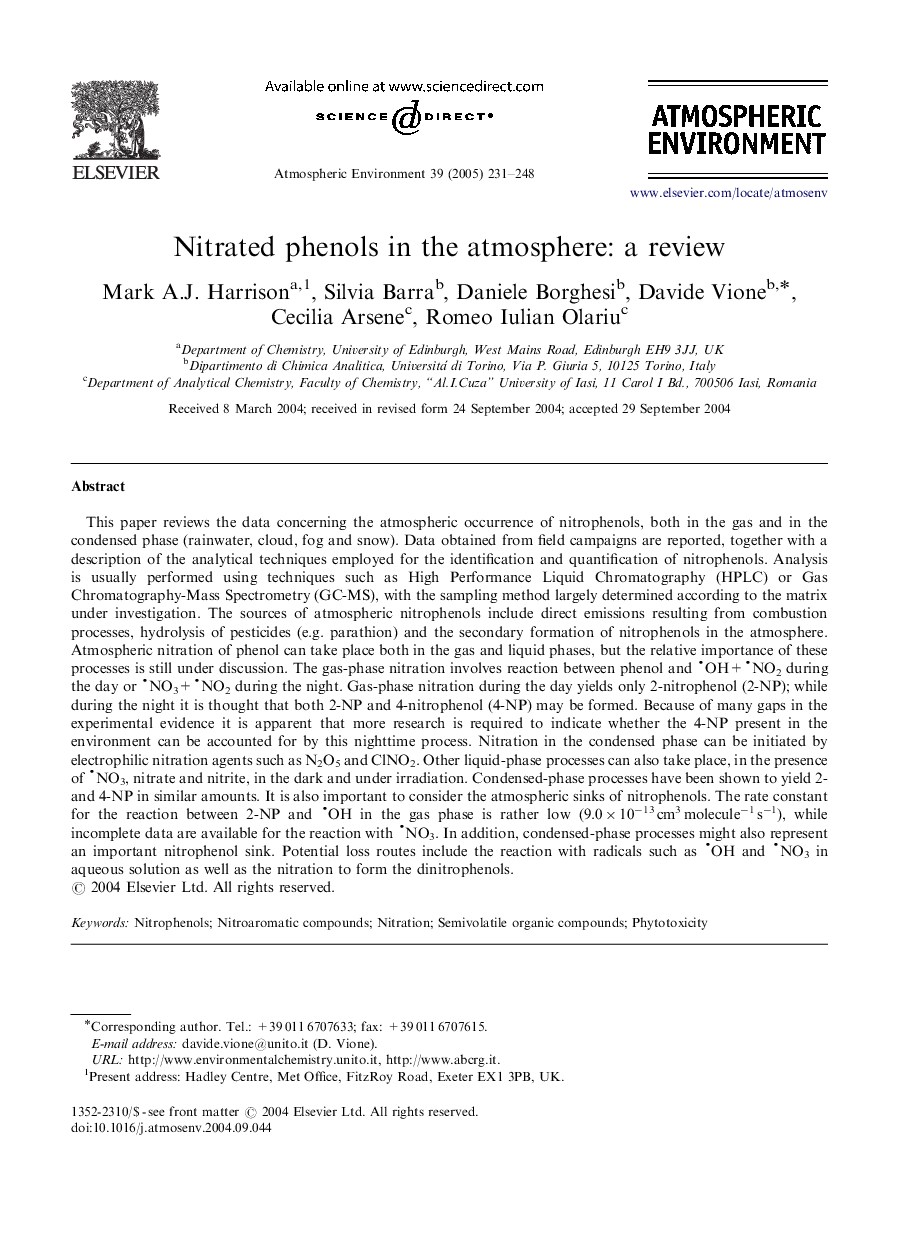| کد مقاله | کد نشریه | سال انتشار | مقاله انگلیسی | نسخه تمام متن |
|---|---|---|---|---|
| 9458858 | 1311312 | 2005 | 18 صفحه PDF | دانلود رایگان |
عنوان انگلیسی مقاله ISI
Nitrated phenols in the atmosphere: a review
دانلود مقاله + سفارش ترجمه
دانلود مقاله ISI انگلیسی
رایگان برای ایرانیان
کلمات کلیدی
موضوعات مرتبط
مهندسی و علوم پایه
علوم زمین و سیارات
علم هواشناسی
پیش نمایش صفحه اول مقاله

چکیده انگلیسی
This paper reviews the data concerning the atmospheric occurrence of nitrophenols, both in the gas and in the condensed phase (rainwater, cloud, fog and snow). Data obtained from field campaigns are reported, together with a description of the analytical techniques employed for the identification and quantification of nitrophenols. Analysis is usually performed using techniques such as High Performance Liquid Chromatography (HPLC) or Gas Chromatography-Mass Spectrometry (GC-MS), with the sampling method largely determined according to the matrix under investigation. The sources of atmospheric nitrophenols include direct emissions resulting from combustion processes, hydrolysis of pesticides (e.g. parathion) and the secondary formation of nitrophenols in the atmosphere. Atmospheric nitration of phenol can take place both in the gas and liquid phases, but the relative importance of these processes is still under discussion. The gas-phase nitration involves reaction between phenol and OH+NO2 during the day or NO3+NO2 during the night. Gas-phase nitration during the day yields only 2-nitrophenol (2-NP); while during the night it is thought that both 2-NP and 4-nitrophenol (4-NP) may be formed. Because of many gaps in the experimental evidence it is apparent that more research is required to indicate whether the 4-NP present in the environment can be accounted for by this nighttime process. Nitration in the condensed phase can be initiated by electrophilic nitration agents such as N2O5 and ClNO2. Other liquid-phase processes can also take place, in the presence of NO3, nitrate and nitrite, in the dark and under irradiation. Condensed-phase processes have been shown to yield 2- and 4-NP in similar amounts. It is also important to consider the atmospheric sinks of nitrophenols. The rate constant for the reaction between 2-NP and OH in the gas phase is rather low (9.0Ã10â13Â cm3Â moleculeâ1Â sâ1), while incomplete data are available for the reaction with NO3. In addition, condensed-phase processes might also represent an important nitrophenol sink. Potential loss routes include the reaction with radicals such as OH and NO3 in aqueous solution as well as the nitration to form the dinitrophenols.
ناشر
Database: Elsevier - ScienceDirect (ساینس دایرکت)
Journal: Atmospheric Environment - Volume 39, Issue 2, January 2005, Pages 231-248
Journal: Atmospheric Environment - Volume 39, Issue 2, January 2005, Pages 231-248
نویسندگان
Mark A.J. Harrison, Silvia Barra, Daniele Borghesi, Davide Vione, Cecilia Arsene, Romeo Iulian Olariu,